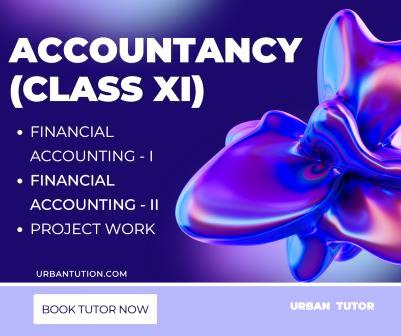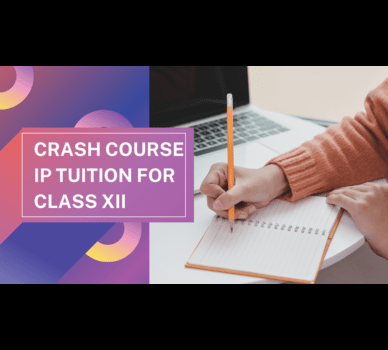 UrbanTution
UrbanTution
Overview
Course Description
PART A: FINANCIAL ACCOUNTING - I
Unit-1: Theoretical Frame Work
Introduction to Accounting
Accounting- concept, meaning, as a source of information, objectives, advantages and limitations, types of accounting information; users of accounting information and their needs. Qualitative Characteristics of Accounting Information. Role of Accounting in Business.
Basic Accounting Terms- Entity, Business Transaction, Capital, Drawings. Liabilities (Non Current and Current). Assets (Non Current, Current); Expenditure (Capital and Revenue), Expense, Revenue, Income, Profit, Gain, Loss, Purchase, Sales, Goods, Stock, Debtor, Creditor, Voucher, Discount (Trade discount and Cash Discount)
Theory Base of Accounting
Fundamental accounting assumptions: GAAP: Concept
Basic Accounting Concept : Business Entity,Money Measurement, Going Concern, Accounting Period, Cost Concept, Dual Aspect, Revenue Recognition, Matching, Full Disclosure, Consistency, Conservatism,
Materiality and Objectivity
System of Accounting. Basis of Accounting: cash basis and accrual basis
Accounting Standards: Applicability of Accounting Standards (AS) and Indian Accounting Standards (IndAS)
Goods and Services Tax (GST): Characteristics and Advantages.
Unit-2: Accounting Process
Recording of Business Transactions
Voucher and Transactions: Source documents and Vouchers, Preparation of Vouchers, Accounting Equation Approach: Meaning and Analysis, Rules of Debit and Credit.
Recording of Transactions: Books of Original Entry- Journal
Special Purpose books:
Cash Book: Simple, cash book with bank column and petty cashbook
Purchases book
Sales book
Purchases return book
Sales return book
Journal proper Note: Including trade discount, freight and cartage expenses for simple GST calculation.
Ledger: Format, Posting from journal and subsidiary books, Balancing of accounts Bank Reconciliation Statement:
Need and preparation, Bank Reconciliation Statement Depreciation, Provisions and Reserves
Depreciation: Meaning, Features, Need, Causes, factors
Other similar terms: Depletion and Amortisation
Methods of Depreciation: i. Straight Line Method (SLM) ii. Written Down Value Method (WDV) Note: Excluding change of method
Difference between SLM and WDV; Advantages of SLM and WDV
Method of recoding depreciation i. Charging to asset account ii. Creating provision for depreciation/accumulated depreciation account
Treatment of disposal of asset
Provisions, Reserves, Difference Between Provisions and Reserves.
Types of Reserves: i. Revenue reserve ii. Capital reserve iii. General reserve iv. Specific reserve v. Secret Reserve
Difference between capital and revenue reserve
Trial balance and Rectification of Errors
Trial balance: objectives, meaning and preparation (Scope: Trial balance with balance method only)
Errors: classification-errors of omission, commission, principles, and compensating; their effect on Trial Balance.
Detection and rectification of errors; (i) Errors which do not affect trial balance (ii) Errors which affect trial balance
preparation of suspense account.
Part B: Financial Accounting - II
Financial Statements Meaning, objectives and importance; Revenue and Capital Receipts; Revenue and Capital Expenditure; Deferred Revenue expenditure. Opening journal entry. Trading and Profit and Loss Account: Gross Profit, Operating profit and Net profit. Preparation. Balance Sheet: need, grouping and marshalling of assets and liabilities. Preparation. Adjustments in preparation of financial statements with respect to closing stock, outstanding expenses, prepaid expenses, accrued income, income received in advance, depreciation, bad debts, provision for doubtful debts, provision for discount on debtors, Abnormal loss, Goods taken for personal use/staff welfare, interest on capital and managers commission. Preparation of Trading and Profit and Loss account and Balance Sheet of a sole proprietorship with adjustments.
Incomplete Records
Features, reasons and limitations. Ascertainment of Profit/Loss by Statement of Affairs method. (excluding conversion method)
Part C: Project Work (Any One)
1. Collection of source documents, preparation of vouchers, recording of transactions with the help of vouchers.
2. Preparation of Bank Reconciliation Statement with the given cash book and the pass book with twenty to twenty-five transactions.
3. Comprehensive project of any sole proprietorship business. This may state with journal entries and their ledgering, preparation of Trial balance. Trading and Profit and Loss Account and Balance Sheet. Expenses, incomes and profit (loss), assets and liabilities are to be depicted using pie chart / bar diagram. This may include simple GST related transactions.
Book your FREE DEMO now.




